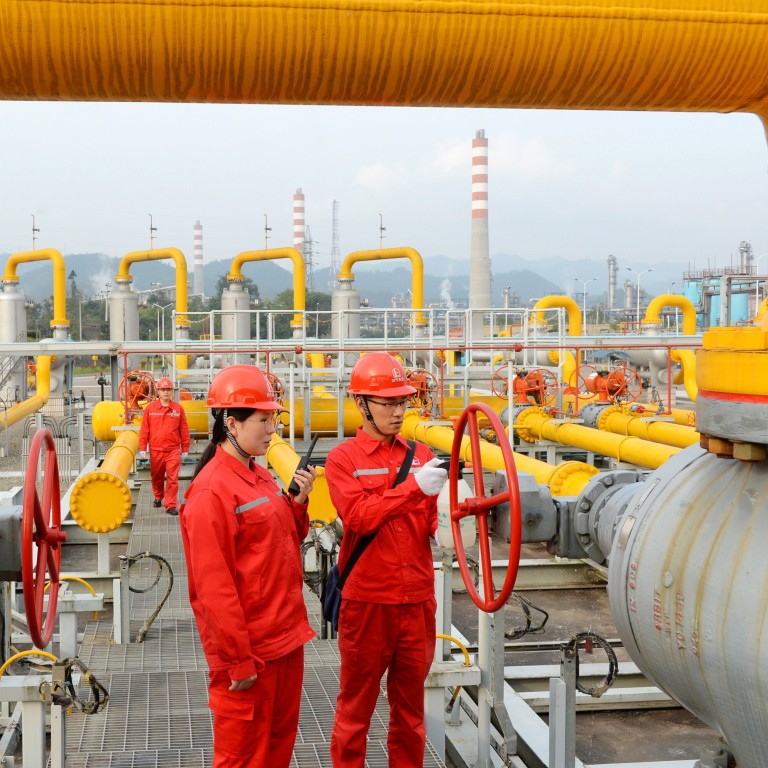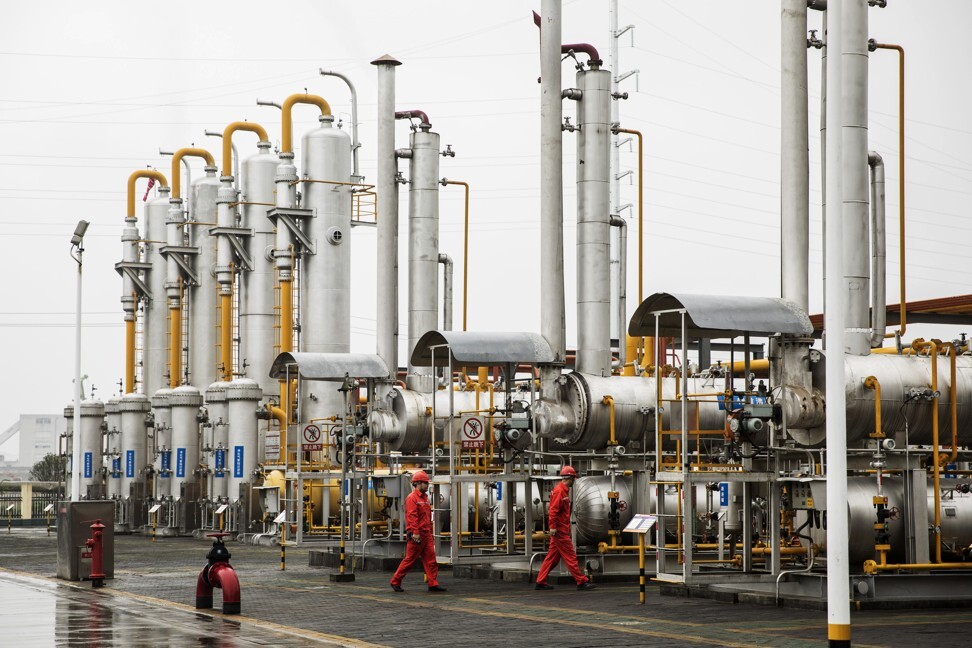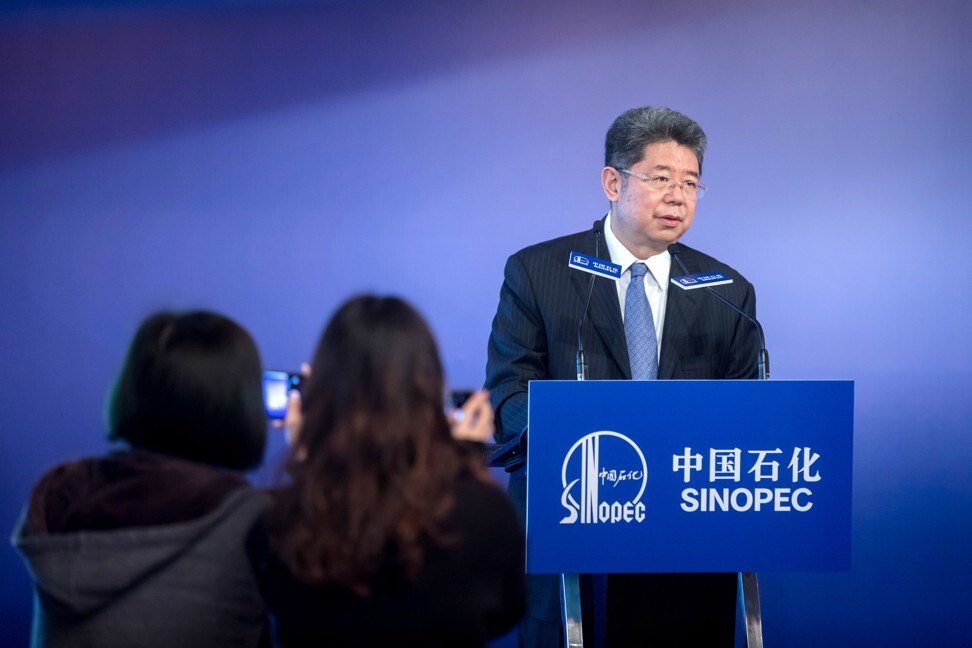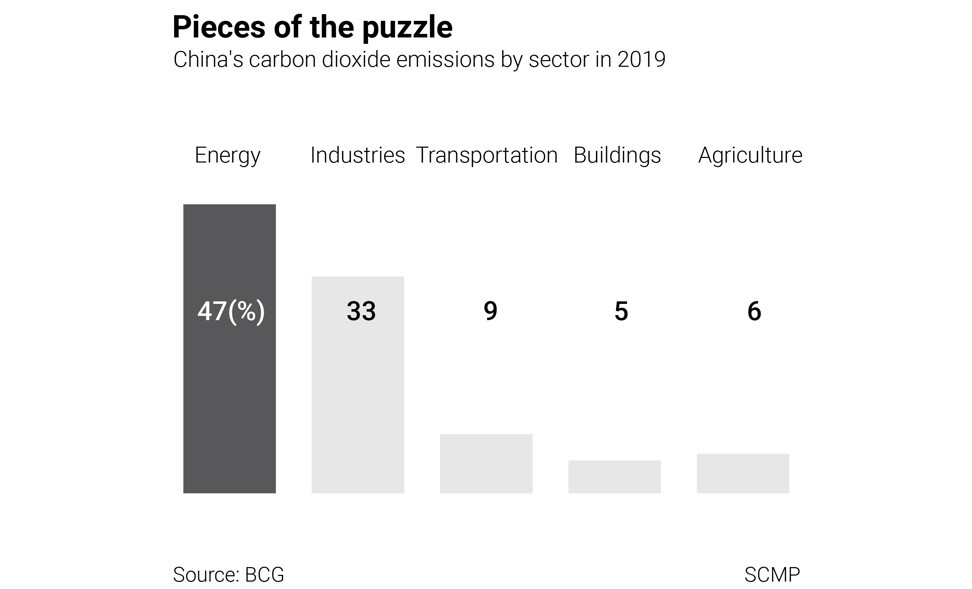
China’s carbon neutral goal: Sinopec plans to spend US$4.6 billion over five years on a supply chain to promote hydrogen
- Sinopec plans to set up 1,000 hydrogen refuelling stations with 200,000 tonnes of annual refuelling capacity
- China’s biggest oil refiner also plans to build facilities run by renewable energy that can produce over 1 million tonnes of hydrogen every year
China Petroleum & Chemical Corporation (Sinopec) has unveiled a multibillion yuan plan to build the nation’s largest supply chain for automotive hydrogen, as it steps in with infrastructure to help the Chinese government meet its goal of becoming a carbon neutral country by 2060.
Sinopec aims to plough 30 billion yuan (US$4.6 billion) to set up 1,000 hydrogen refuelling stations with 200,000 tonnes of annual refuelling capacity, and facilities run by renewable energy that can produce over 1 million tonnes of the zero-emission fuel every year, said president Ma Yongsheng. The plan, scheduled for the five years through 2025, was unveiled for the first time.
“As a major energy company, we have accumulated rich experience and technological advantages in hydrogen production and utilisation,” he said during a Monday conference call with analysts and the media after Sinopec’s interim financial results. “Our [more than] 30,000 fuel stations throughout China will also give us an edge on hydrogen distribution. We will seize the historic opportunity to accelerate our hydrogen business.”
The plan by China’s largest oil distiller and petrochemicals producer is the latest example of how the fossil fuel industry in the biggest carbon dioxide-emitting economy on the planet is falling into step to achieve its 2050 net zero carbon emission target, a decade ahead of the 2060 date pledged by Chinese President Xi Jinping.

The Beijing-based state company emitted 170.9 million tonnes of greenhouse gases last year, of which 84 per cent were attributed to its oil refining and chemicals manufacturing operations, according to its latest sustainability report. Net zero is attained when residual emissions is offset by investment in natural carbon sinks such as afforestation, or facilities that capture and store carbon dioxide from the atmosphere.
Sinopec’s preliminary budget will fund the production of hydrogen, purification, treatment, storage and transport facilities, besides the research and development of key materials needed, Ma said. The company will also upgrade its refineries and petrochemical plants to use so-called “green hydrogen” in their own operations to reduce their carbon footprint, he added.
The goal for the hydrogen supply chain and utilisation initiatives is to avoid the emission of 10 million tonnes of carbon dioxide per year by 2025, Ma said.

Sinopec is not the only one among China’s three biggest oil companies to be plunging into non-fossil fuels. PetroChina, the largest crude oil producer, last week said it would steadily raise its investments on low-carbon energy projects, so that they account for one-third of overall spending by 2035.
Besides green hydrogen, Sinopec also plans to use renewable energy to decarbonise its operations, aiming to install 7,000 solar power projects – with total generating capacity of 400 mega-watts – at its fuel stations network by 2025. It also plans to increase its low carbon plant-based fuel supply capacity, so that it will be able to provide 100,000 tonnes of aviation biofuel and 1.45 million tonnes of ethanol annually by 2025, he added.
At its refining and petrochemical sites in coastal provinces, it is discussing with equipment suppliers such as Minyang Smart Energy Group on feasibility to install offshore wind farms, said senior vice-president Liu Hongbin.
Sinopec swung to a net profit of 40 billion yuan in the first half ended June, beating analysts’ consensus estimate of 35 billion yuan in a sharp turnaround from last year’s interim loss of 21.8 billion yuan when demand slumped among closed industries during the Covid-19 pandemic. The company has declared an interim dividend of 0.16 yuan a share, more than double the 0.07 yuan payout last year. Sinopec’s shares rose 4.8 per cent on Monday to a seven-week high of HK$3.70 in Hong Kong.
Sinopec’s second-half sales will improve from the first six months, which will propel this year to a better performance than 2020 or 2019, Ma said, citing data in the past two months. Still, the gross profit margin from the petrochemical business is likely to fall in the second half due to competition from newly commissioned industry capacities, even as demand is expected to grow at 8 per cent, said senior vice-president Yu Bocai.
The company is aiming to raise natural gas production by over 10 per cent annually – from 30.4 billion cubic metres (bcm) last year to 34 bcm this year, 38 bcm next year and 42 bcm in 2023. Carbon emission of gas is around 30 per cent less than that of petrol and diesel.


